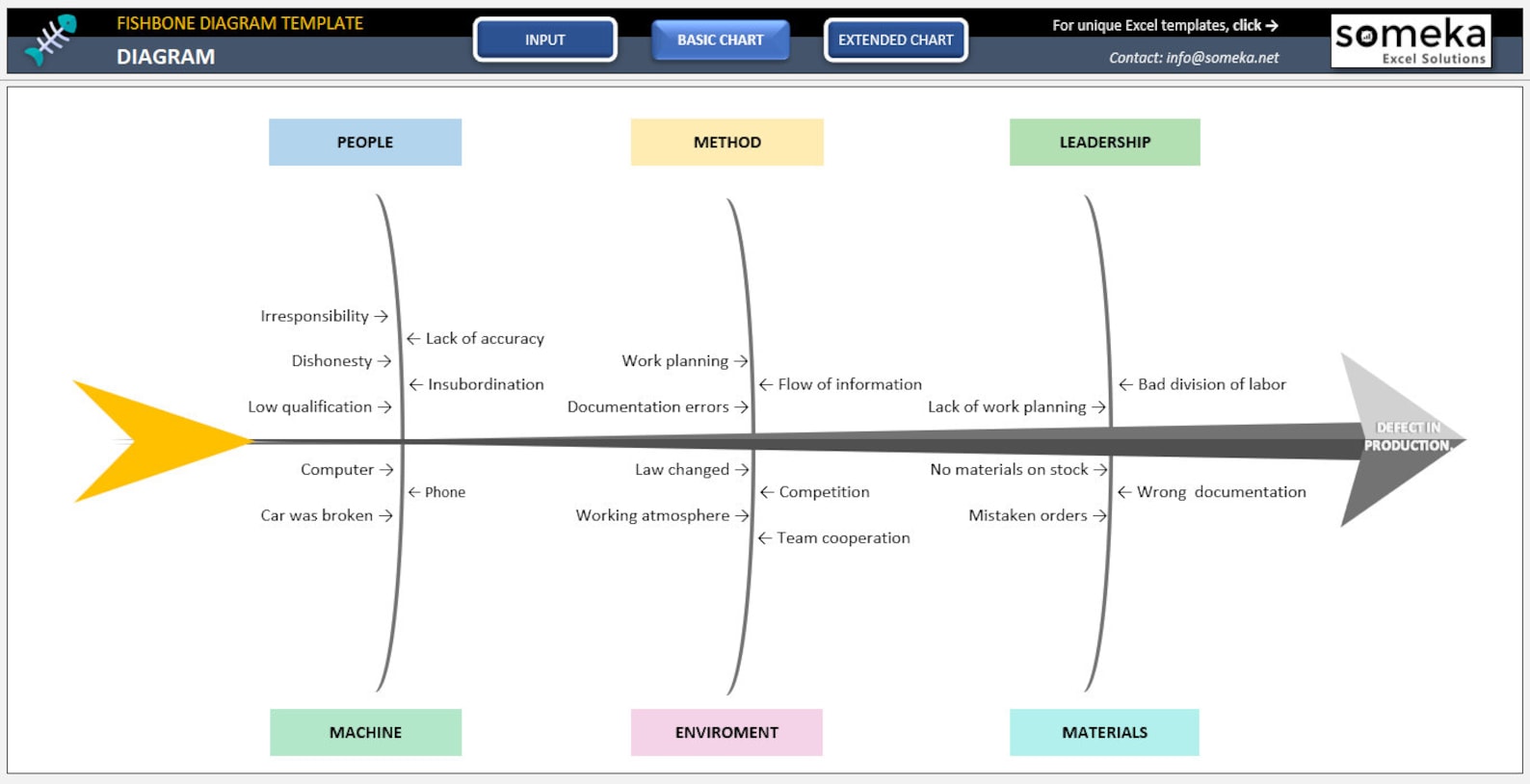

(Here’s a chart that compares the features in XMind and XMind Pro.)įor this tutorial, you’ll need only the free XMind version to develop a fishbone diagram.
Ishikawa diagram generator online pro#
For instance, XMind provides a collaboration service to share public mind maps private mind maps are part of the XMind Pro subscription.
Ishikawa diagram generator online software#
The Pro version of the software (which costs $49USD per year) provides Microsoft Office integration and several project management features that are geared toward business users. XMind is user friendly, and the basic software package supports a ton of mind-mapping features, including mind map, spreadsheet, and fishbone diagram views. XMind is a free, open-source, mind-mapping tool based on the Eclipse software development framework. I’ve worked with several mind-mapping tools for fishbone diagrams, and XMind is the solution I recommend for creating these diagrams. (Click the image to enlarge.) Building a fishbone diagram in XMindĪ fishbone diagram is often facilitated during a brainstorming session. In this example, the common categories are methodology, software testing, project management, business case, vendors, and hardware.įigure B IT problem fishbone diagram. In Figure B, the fishbone diagram depicts causes for long software delivery life cycles. These categories are guidelines rather than restrictions categories often emerge from the discussion about potential causes for the specific problem. Common categories in a manufacturing process typically include people, methods, equipment, materials, measures, and environment. Common categories in the IT domain could include people, process, requirements, architecture, organization, and tools. The main parts of the skeleton represent the common categories used to organize the causes of the problem.

The head of the fishbone represents the problem statement, and the body of the fishbone represents multiple causes that contribute to the overall effect or problem. (Click the image to enlarge.)Ī fishbone diagram is composed of a single effect and multiple causes. The fishbone diagram, also known as an Ishikawa diagram or a Cause and Effect Diagram, gets its name because it represents a fish skeleton ( Figure A).įigure A Fishbone diagram. The fishbone diagram was created by Kaoru Ishikawa in the 1960s and has become a useful tool in quality management. Create fishbone diagrams with the XMind open-source toolĪfter trying several mind mapping tools for building fishbone diagrams, Andy Makar recommends using XMind during your next IT project brainstorming session.


 0 kommentar(er)
0 kommentar(er)
